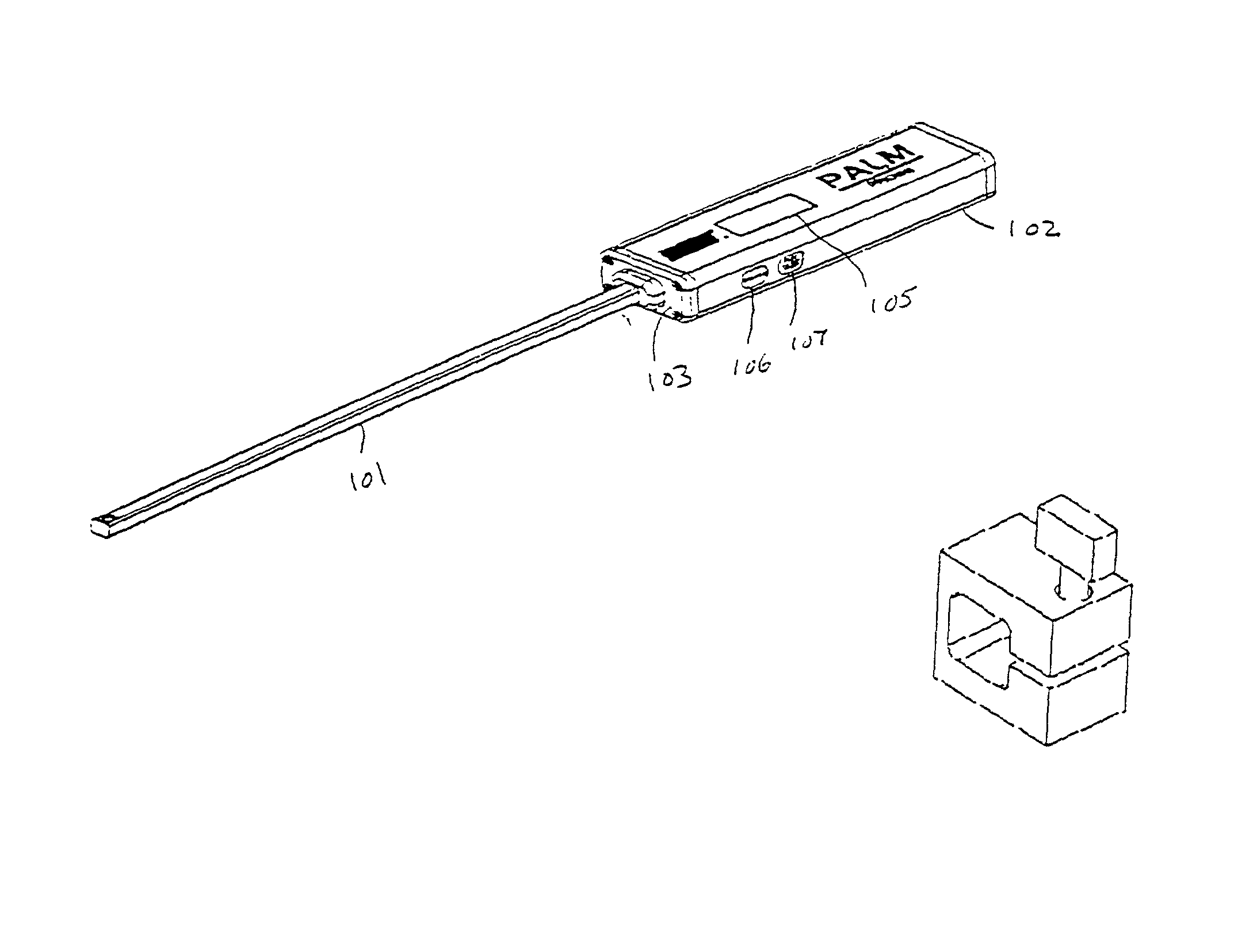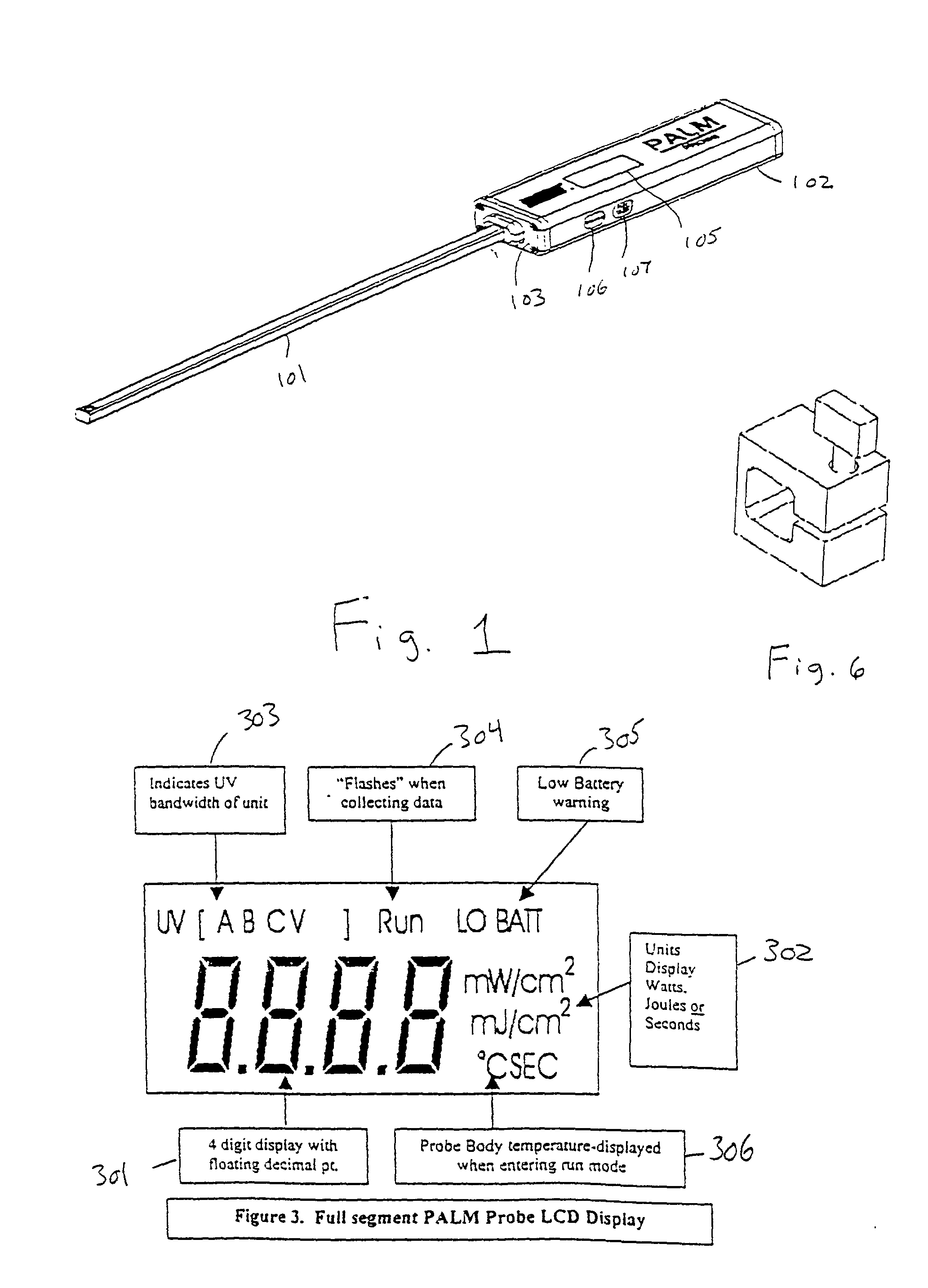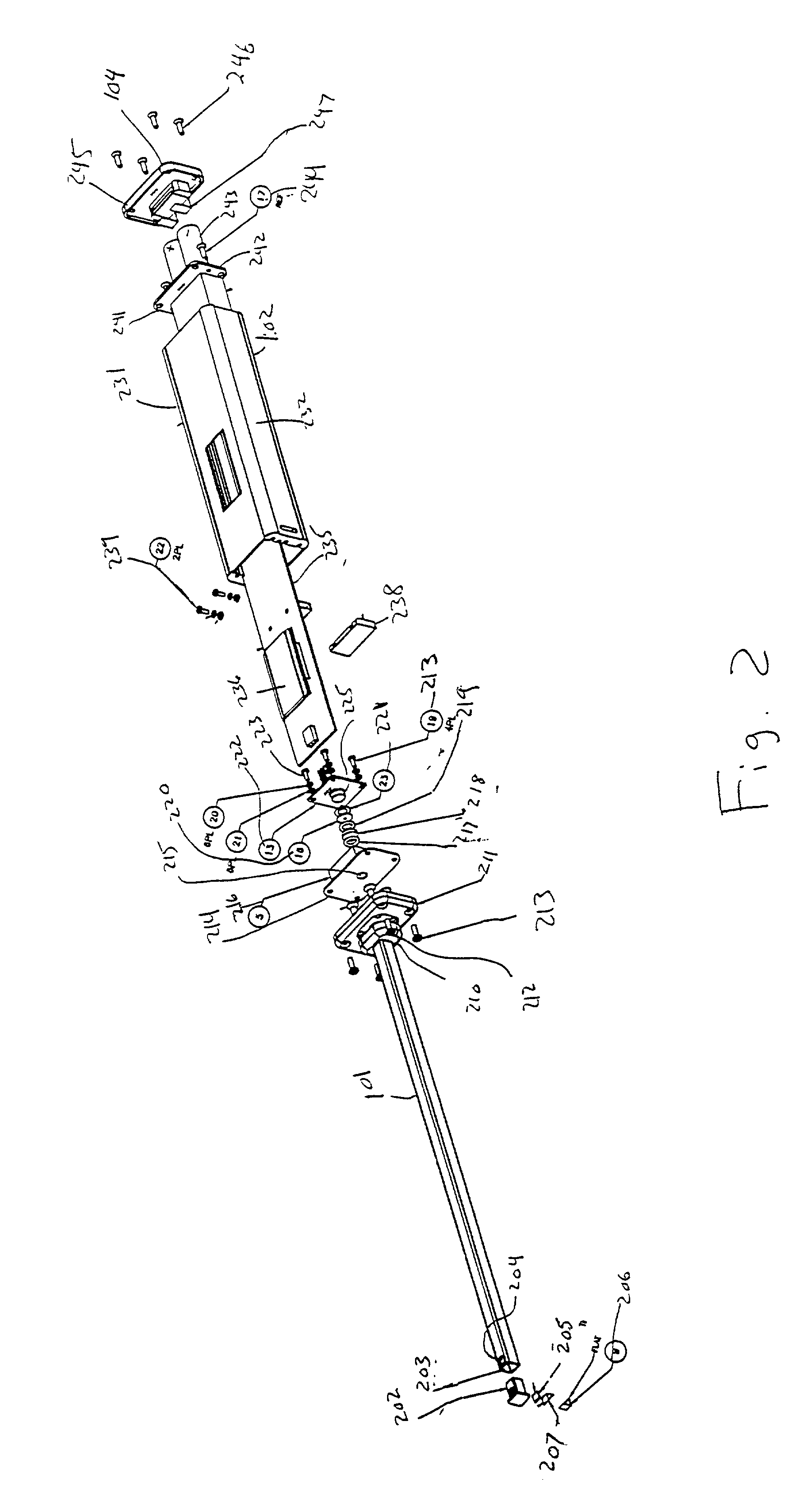Probe style radiometer
a radiometer and probe-type technology, applied in the direction of photometry using electric radiation detectors, optical radiation measurement, instruments, etc., can solve the problems of high cost, high cost, and high cost of quartz rods
- Summary
- Abstract
- Description
- Claims
- Application Information
AI Technical Summary
Benefits of technology
Problems solved by technology
Method used
Image
Examples
Embodiment Construction
[0034] Referring now to the drawings and more particularly to FIG. 1, a probe style radiometer according to one embodiment of the invention includes a probe 101 and an instrument body 102. The probe may be a hollow rod made of a rigid material which is either conductive or nonconductive. Preferably, probe 101 is a hollow metal rod having a substantially rectangular cross-section. Alternatively, the rod may be filled with a light-guiding medium such as glass or optical fiber. For example, if desired, probe 101 may use as its internal light-guiding medium metal clad glass, quartz, or optical fiber. Further, for enhanced protection, the glass, quartz, or fiber may contain an insulating coating.
[0035] Body 102 contains optical and electronic circuitry for detecting and processing the ultaviolet radiation collected by the probe. The body also serves as a handle. Preferably, the body has physical dimensions which comfortably fit a user's hand. This may be achieved by constructing the body...
PUM
 Login to View More
Login to View More Abstract
Description
Claims
Application Information
 Login to View More
Login to View More - R&D
- Intellectual Property
- Life Sciences
- Materials
- Tech Scout
- Unparalleled Data Quality
- Higher Quality Content
- 60% Fewer Hallucinations
Browse by: Latest US Patents, China's latest patents, Technical Efficacy Thesaurus, Application Domain, Technology Topic, Popular Technical Reports.
© 2025 PatSnap. All rights reserved.Legal|Privacy policy|Modern Slavery Act Transparency Statement|Sitemap|About US| Contact US: help@patsnap.com



